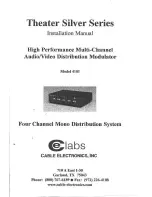
240 B: More About Calculations
File name : English-M02-1-040308(Print).doc Print data : 2004/3/9
may be additional positive or negative answers, or no true solution at all.
You can continue searching for other solutions by halting the calculation
and entering a different guess.
One way to obtain a good guess for
IRR%
is to calculate
NPV
for
various interest rates (
I%
). Since
IRR%
is the interest rate at which
NPV
equals zero, the best estimate of
IRR%
is the interest rate that yields the
value for
NPV
closest to zero.
To find a good estimate for
IRR%
, key in a guess for
IRR%
and press
Then, press
to calculate
NPV
for that value. Repeat the
calculation of
NPV
for several values of
I%
, and look for trends in the
results. Choose as your guess for
IRR%
a value of
I%
that produces an
NPV
close to zero.
Solver Calculations
As noted in chapter12, the Solver uses two methods to find solutions,
depending on the complexity of the equation:
direct
and
iterative
(an
indirect). To use all the calculating power included in the Solver, it
would help to understand, in a general way, how it works.
Direct Solutions
When you start a calculation (by pressing a menu key), the Solver first
tries to find a
direct
solution by “isolating” the variable you are solving
for (the
unknown
). Isolating a variable involves rearranging the equation
so that the unknown variable is by itself on the left-hand side of the
equation. For example, suppose you enter the equation:
P R O F I T = P R I C E
-
C O S T
If you’ve stored values for
PROFIT
and
PRICE
, pressing
causes
the Solver to internally rearrange the equation algebraically to solve for
COST
(
COST
is the unknown):
C O S T = P R I C E
-
P R O F I T
Answers calculated this way are called direct solutions.









































